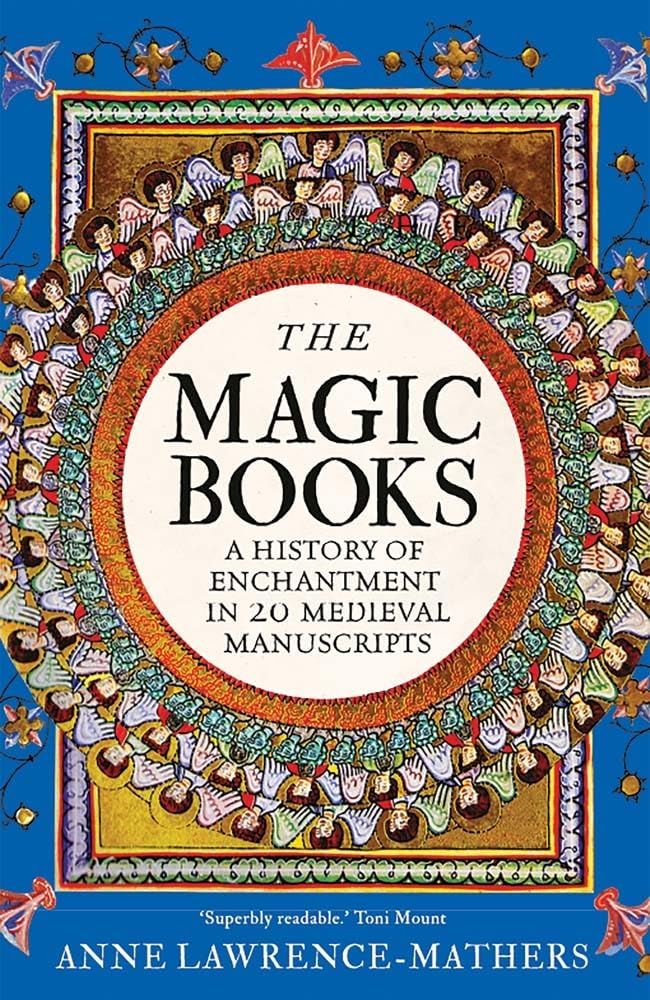Looking for a good read? Here is a recommendation. I have an unusual approach to reviewing books. I review books I feel merit a review. Each review is an opportunity to recommend a book. If I do not think a book is worth reading, I find another book to review. You do not have to agree with everything every author has written (I do not), but the fiction I review is entertaining (and often thought-provoking) and the non-fiction contain ideas worth reading.
Book Review
In the Absence of Science
Reviewed by Mark Lardas
April 13, 2025
“The Magic Books: A History of Enchantment in 20 Medieval Manuscripts,” by Anne Lawrence-Mathers, Yale University Press, March 2025, 368 pages, $38.00 (Hardcover), $38.00 (E-book)
Science fiction writer Arthur C. Clark once wrote “Any sufficiently advanced technology is indistinguishable from magic.” The converse appears true. In the absence of sufficiently advanced technology magic substitutes.
“The Magic Books: A History of Enchantment in 20 Medieval Manuscripts,” by Anne Lawrence-Mathers, illustrates this. A history of medieval books about magic, it uses illuminated manuscripts printed from the ninth century through the sixteenth century which demonstrates European fascination with magic over that period.
Lawrence-Mathers shows why medieval society was deeply ambivalence about magic. The church opposed magic for theological reasons. Chief among them was free will. If individual fortunes could be predicted by magic, free will could not exist. Christians believed all good things came from God. Magic was powered by devils and demons. Any benefit gained through magic was demonic and a false fruit. Any harm caused by magic was evil.
Despite this she shows the church and princes were sponsors of and participants in magic’s use, underwriting the books presented in her study. Practitioners hedged their actions by staying within boundaries. Individual horoscopes were avoided, Predictions limited to general events such as weather forecasting. (Which proved no worse or better than today’s climate change predictions.)
The books presented testify to state and church patronage. The books are hand-written. They are also lavishly illustrated, elaborately illuminated, and meticulously bound. They are works of art as much as they are literary accomplishments. They were objects of serious study, kept in university, royal, and monastic libraries.
“The Magic Books” contains nearly 60 full-color illustrations taken from surviving works. They are elaborate, incorporating complex artworks, multicolor inks (including gold illumination) and complex fonts.
Most of these books study the stars, astrology mixed with astronomy. These books are less interested in the actual positions of the stars and planets than their nature – how their appearance influences human behavior. Yet there was practical application buried in them, including planetary ephemerides and calculations for predicting the Christian liturgical calendar.
Other subjects studied include chiromancy (palm reading) geomancy (earth divination, including casting lots) and sign reading. All claim to channel knowledge from the ancients: Egyptians, Babylonians, Persians, and Indians were felt to have hidden knowledge.
“The Magic Books” is a fascinating look at the human desire to bring order out of chaos. Lawrence-Mathers reveals the extent to which people throughout history will go for a better understanding of the world in which they live.
Mark Lardas, an engineer, freelance writer, historian, and model-maker, lives in League City. His website is marklardas.com.
